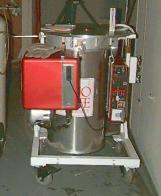[Main Index]
|
|
OSIRIS Online Documentation [Main Index] |
 |
On his arrival on the Ohio State faculty, Darren DePoy led the effort to incorporate a spectroscopic mode in OSIRIS, which was also funded by a second grant from the NSF (AST-9218449). The full imager/spectrometer was deployed in 199x. With its original NICMOS3 array, OSIRIS received considerable use as a facility instrument at Lowell until Ohio State left the Lowell consortium to join the MDM Consortium in July 1998.
During 199x, OSIRIS spent a year on leave at CTIO, where it saw extensive use on the 1.5-meter and 4-meter telescopes...
The NICMOS3 version of OSIRIS was a remarkably productive instrument...
After Ohio State left Lowell, OSIRIS was effectively left homeless, since it was designed for an f/17 beam, while the MDM telescopes are used at their f/7 foci. In addition, there was already an IR imager/spectrometer, MOSAIC/TIFKAM, in use at MDM, so there was no strong incentive to upgrade it.
But, like its mythological namesake, OSIRIS refused to die. In 1998, CTIO purchased a new 1024x1024 NICMOS4 HgCdTe array for OSIRIS which was installed by Ohio State. The data-taking system was upgraded and some new filters were installed. Starting in Spring 1999, OSIRIS will spend full-time as a facility instrument at CTIO where it may be used by the community on the 1.5-meter and 4-meter telescopes. The formal agreement between Ohio State and CTIO will keep OSIRIS at CTIO for at least three years.